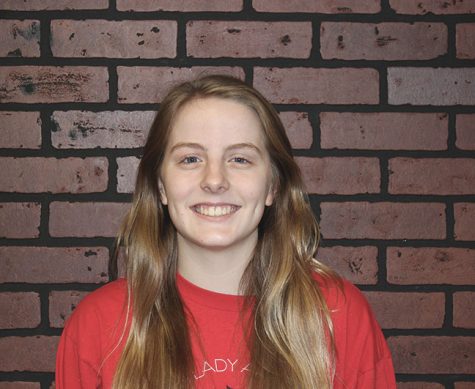In years past, most students graduated with the 4×4 plan, or four core classes all four years of high school. Now the state has given more options to students so they can individually tailor their diploma to fit their specific strength or interest areas through the House Bill 5.
Students have to pick their endorsement at the end of eighth grade and sophomore Kelly Rowe says that this is too early to choose. While they move through high school, however, students are able to update and change their pathways. Rowe said that she started with arts and humanities because she wanted to be an actress. Though she wanted to change that by her sophomore year she decided to stick with arts and humanities. She didn’t want to have to make up credits for a new endorsement course. She says that this is a downside to the new schedules.
“I feel like it puts a damper on my education because I can’t do what I want,” Rowe said.
Freshman counselor Natalie Melton said that most students are still academically focused, which the counselors prefer. Those students are following the multidisciplinary and STEM, or science, technology, English and math, endorsements. The other three, arts and humanities, business and industry, and public services, are more elective oriented.
“[The counselors] feel like we are helping the students understand the importance of starting with an academic endorsement just to keep every future door still open,” Melton said.
Melton doesn’t see a big change in what the 9th and 10th graders are pursuing versus what the older students pursue. Melton said that though the student paths seem to be similar to the juniors and seniors, the counselors see students switching around a few classes.
“I like the idea of giving more flexibility to students to tailor their diploma to their unique strength areas and interest areas,” Melton said.
Rowe says that the program is still a work in progress. The process of career cruising and picking classes still confuses her and many of her friends. She said that the counselors try to help, but they might not have enough time to help everyone.
“I feel like a lot of students just get discouraged like ‘Oh, my counselor’s not gonna care about me personally because they have so many other students to take care of,’” Rowe said.
According to Melton, the counselors have found that the program can also be overwhelming to parents because “there’s really no ‘one size fits all model.” The parents are mainly stumped by how each of the five different endorsements work. Therefore, the counselors have decided to gear the programs towards STEM and multidisciplinary when talking with large groups because those are the academically based diplomas, which parents might understand better.
However, Melton says that she doesn’t think the program is going to change soon because it is just getting started. Melton said she wants to see how colleges will react once they are admitting students with this diploma. The counselors don’t know how it will turn out, says Melton, but they are interested and excited for the outcome.
On the other hand, Rowe says that she wished they would have stayed with the 4×4 plan.
“I feel like the graduation plan that juniors and seniors follow is just much easier,” Rowe said.







